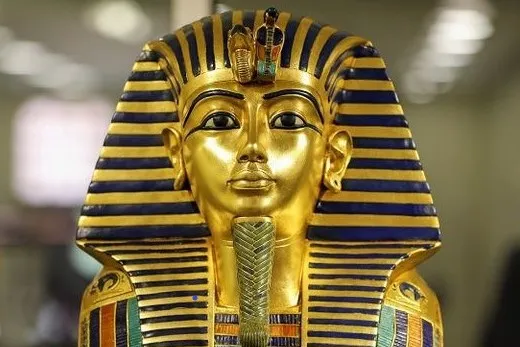Recent News

15
Mar
Mask of Tutanchamun

The Mask of Tutankhamun is a golden burial mask of the ancient Egyptian Pharaoh Tutankhamun from the 18th Dynasty (1334–1325 BC). After over 3,000 years, it was excavated in 1925 by Howard Carter in tomb KV62 in the Valley of the Kings. Today, it is displayed in the Egyptian Museum in Cairo.
Key Facts About the Mask
- Height: 54 cm
- Weight: 10 kg
- Material: High-purity gold, semi-precious stones
- Design: Representation of the god Osiris
- Inscription: Spells from the Book of the Dead
Discovery of the Mask
The tomb was discovered in 1922 in the Theban Necropolis and opened in 1923. Two years later, the young king's sarcophagus was opened, and on October 28, 1925, the team uncovered the golden mask.
Quote from Howard Carter:
"The mask bears the attributes of Osiris, but the face is that of Tutankhamun – calm and beautiful. It gazes directly at the heavens."
In December 1925, the mask was transported to the Egyptian Museum in Cairo, where it remains on display to this day.
Description of the Mask

The Mask of Tutankhamun is a masterpiece of ancient Egyptian art.
- Size: 54 cm high, 39.3 cm wide, 49 cm deep
- Gold Layers: Two layers with a thickness of 1.5–3 mm
- Materials Used:
- Lapis lazuli (eye outlines and eyebrows)
- Quartz (eyes)
- Obsidian (pupils)
- Amazonite, turquoise, and faience
The mask depicts the pharaoh’s face with a nemes headcloth and royal insignias (cobra and vulture), symbolizing rule over Upper and Lower Egypt.
The Mask’s Beard
The mask originally featured a 2.5 kg gold beard, inlaid with blue glass to create a braided effect. The beard detached in 1925 and was reattached in 1944. However, improper restoration in 2015 led to further repairs.
Significance and Unique Features
The mask is considered one of the most famous artworks in the world and a symbol of the culture and mystique of ancient Egypt. According to Egyptologist Nicholas Reeves:
"Not only is it the epitome of the image from Tutankhamun's tomb, but it is also the most iconic object of ancient Egypt."



_1_lg.webp)
_lg.webp)
_lg.webp)
_lg.webp)

